While in London, we visited the Victoria and Albert Museum. It was fascinating and honestly, I could have spent the entire day there. We only had a few hours and as it was the first day, we were suffering from jet lag. I did manage to take a few pics of furniture within their British Galleries to share with you all. I must admit that as I looked at the woodwork on that huge bed and one of the tables, all I could think of was how great that detail would look painted!
The Great Bed of Ware This bed is in the typical style of carved wooden beds of the 1590s but it is remarkable for its large size. The bed was probably made as a curiosity to attract customers to one of the inns at Ware, Hertfordshire. William Shakespeare mentioned it in his play Twelfth Night, first performed in 1601. The contemporary playwright Ben Jonson called it ‘the great bed at Ware’ in a play in 1609. Visitors often carved their initials on the bed or applied red wax seals, which are still visible on the bedposts and headboard today.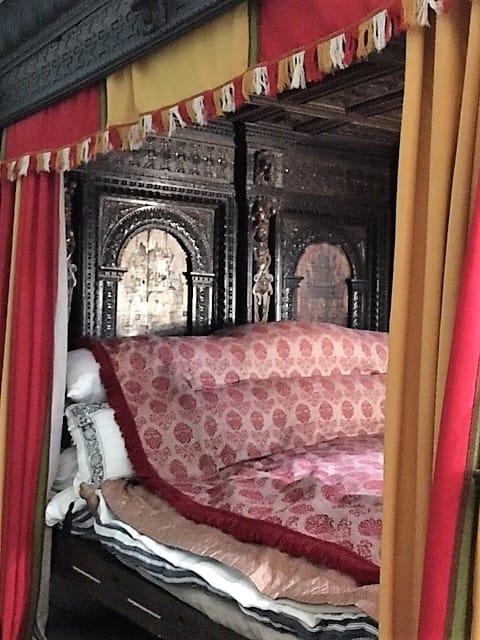
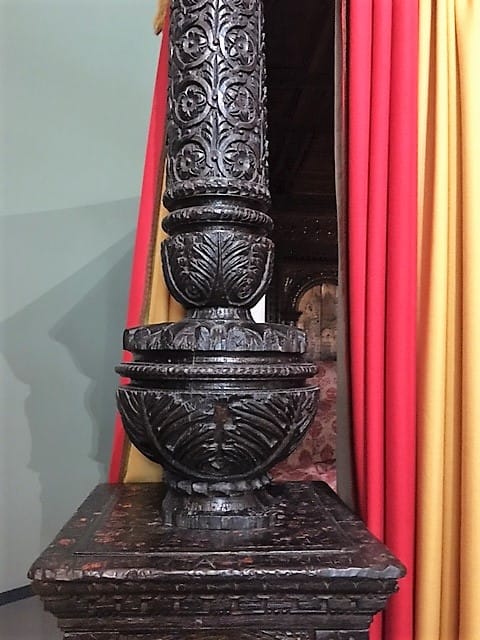
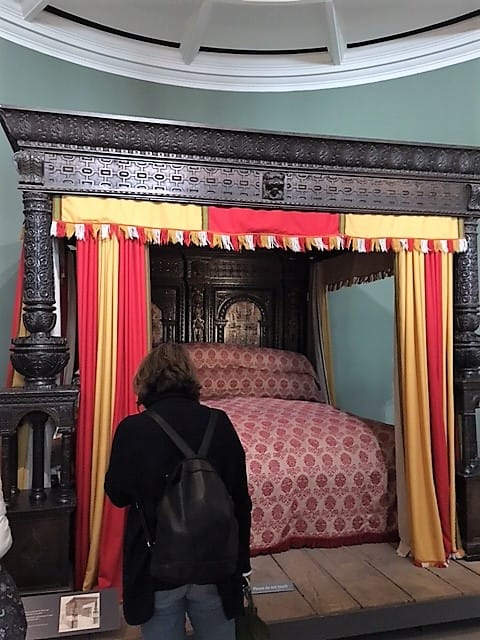
Armchair from 1625 This chair has a scallop-shell back based on the sgabello, an ornate form of hall chair widely used in Venice from about 1570. Believed to be designed by Francis Cleyn, chief designer at the Mortlake tapestry works from 1626. Chairs like this would have been popular with the select group of courtiers known as the ‘Whitehall Set’. They were close to Charles I and shared his taste for the latest fashions from Italy and France.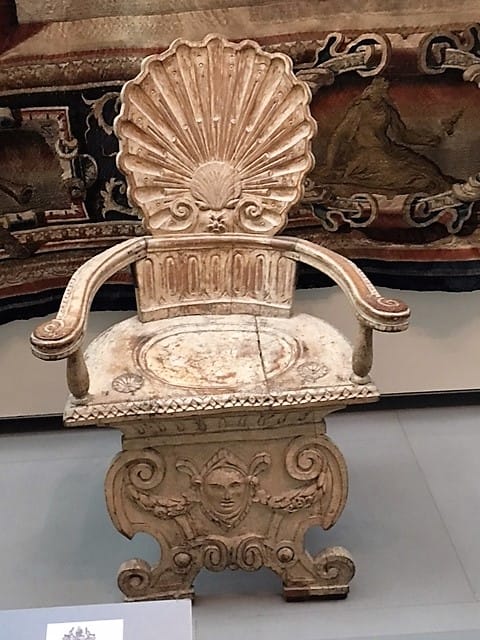

Dyrham Bookcase, about 1695 The bookcase was one of a pair made for William Blathwayt, who was Secretary of War to William III from 1683 to 1704. His uncle, Thomas Povey, was a friend of the diarist Samuel Pepys and Blathwayt may have seen Pepys’s library in Buckingham Street, London. It had twelve similar oak bookcases, which were made from 1666 onwards as required. These are now at Magdalene College, Cambridge. 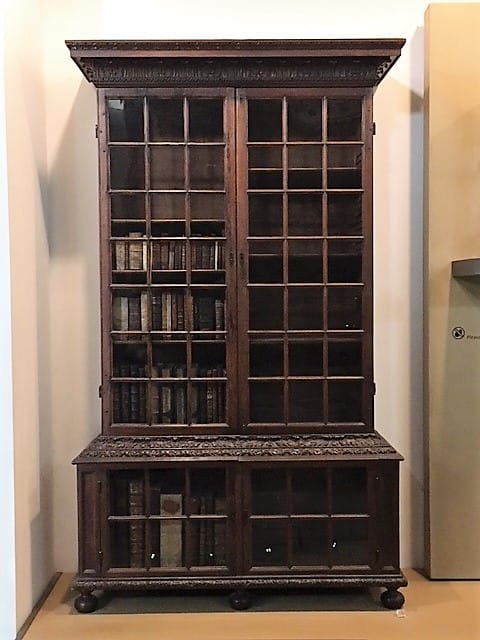
Table, about 1670 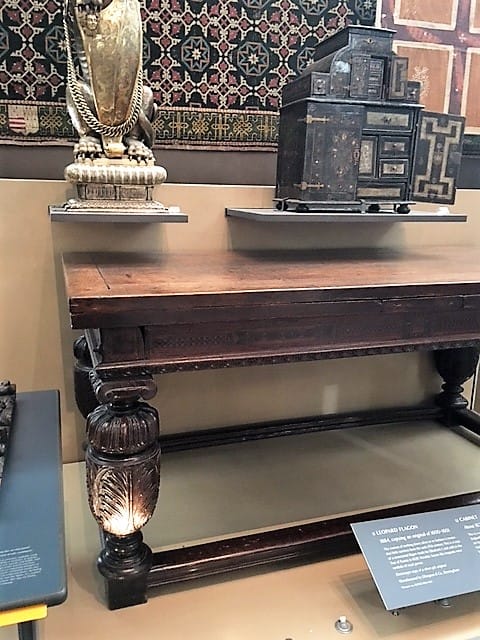
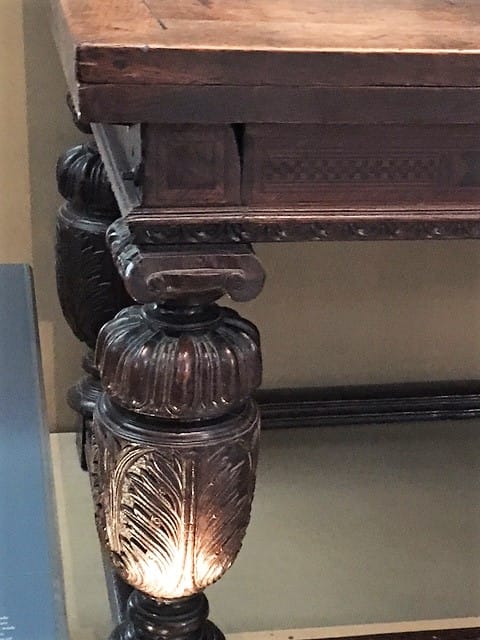
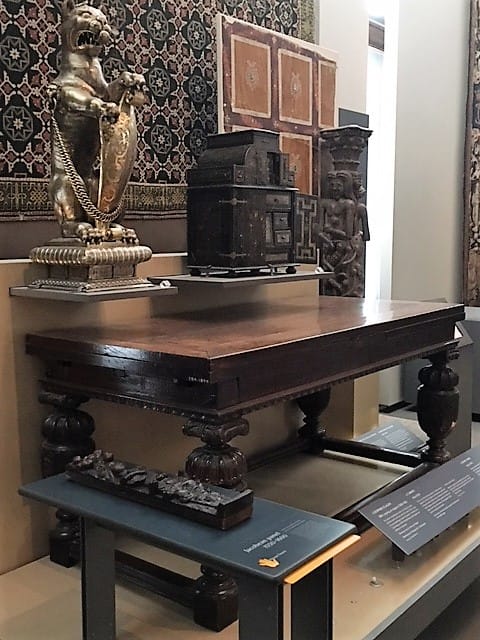
Table, about 1674 This table is decorated with a view of Wingerworth Hall, Derbyshire. The maker used wood with bone (some stained green). For the background, the walnut was cut in slices across small branches, to give a decorative, marquetry effect.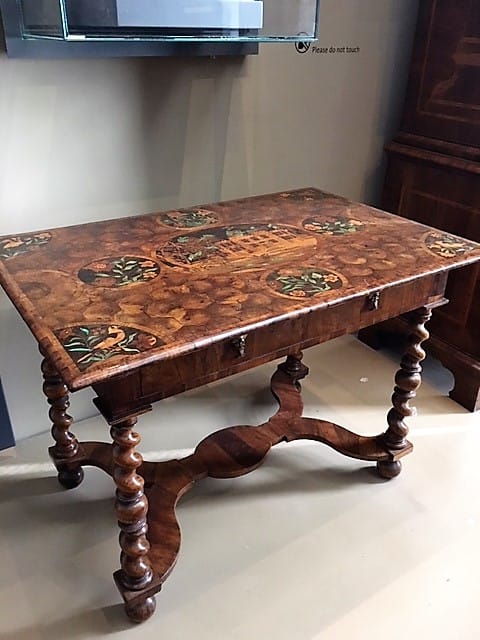
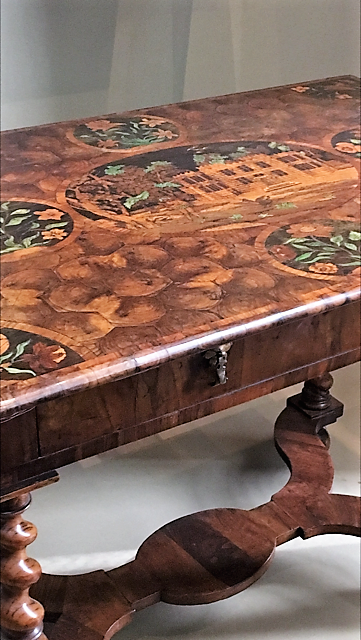
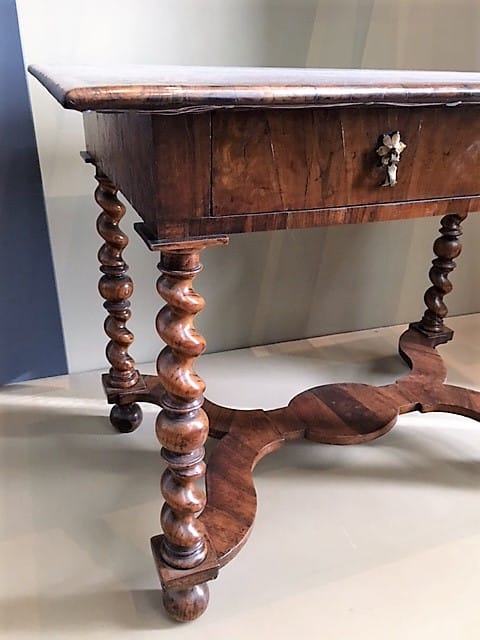
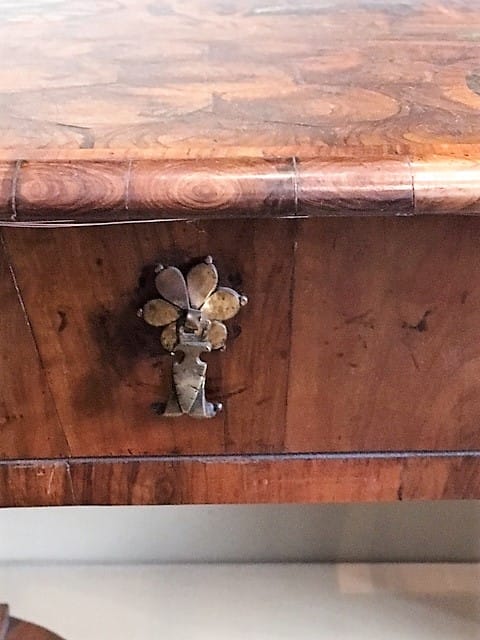
Cabinet, 1700 by John Byfield (maker) The cabinet is in three sections. The lowest is a chest of five drawers, banded with sycamore and decorated with sprays of berries arranged in pairs and tied with ribbons representing true lovers’ knots. The bracket feet have replaced the original bun feet. The two doors of the central section open to reveal three tiers of drawers and a central inner door concealing a further inner tier of drawers. The outer drawers are decorated with floral marquetry. The double-domed cresting on the top of the cabinet is inspired by Dutch furniture. The ‘pleating’ of its cornice is a German feature. The crossed Ls on the front of the upper doors are a reference to the monogram for the French king, Louis XIV.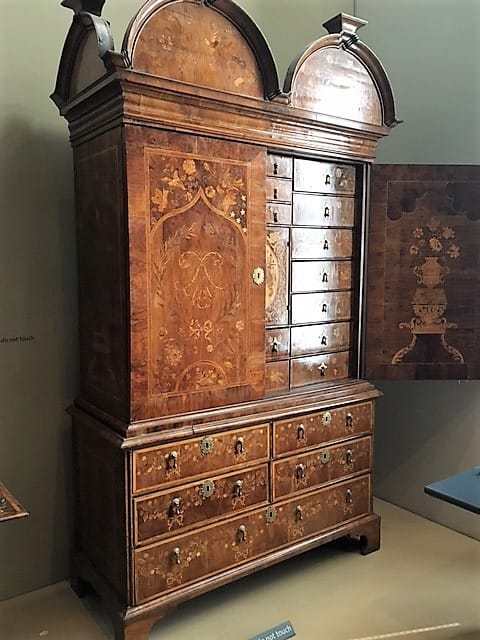
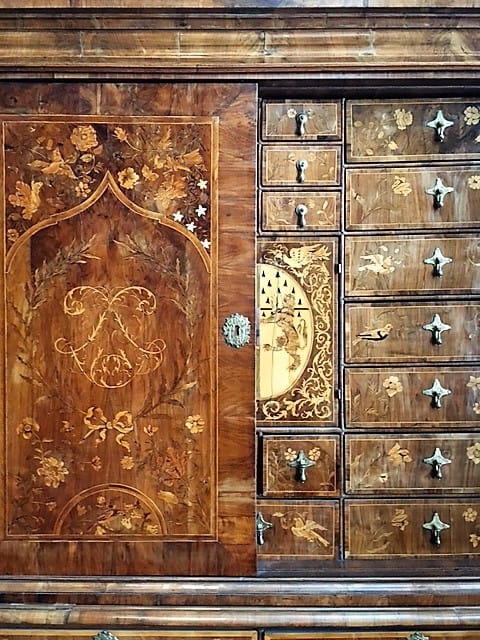
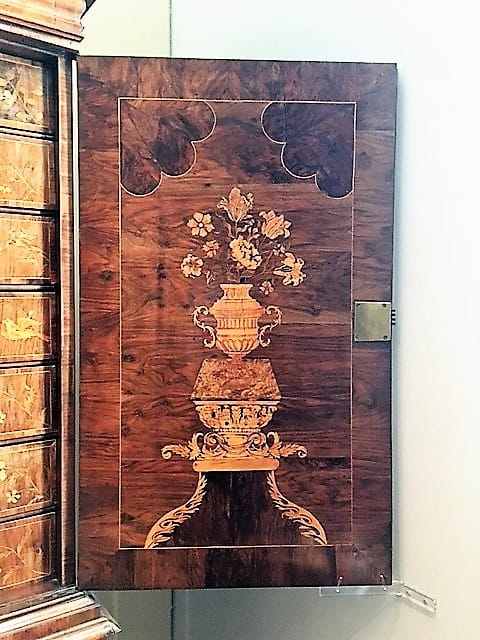
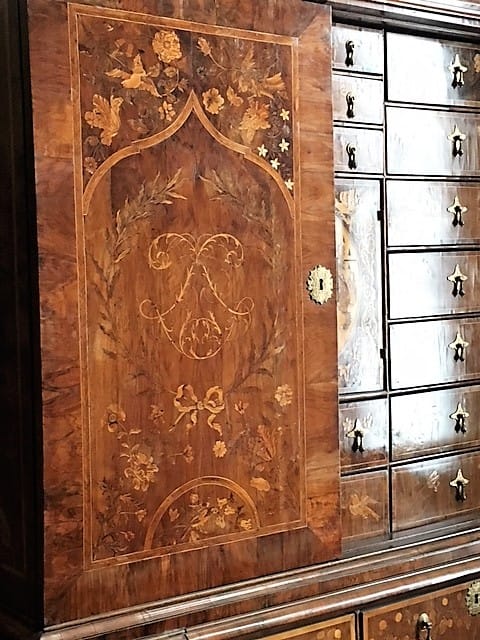
Table, Mirror, Candlestand, about 1680
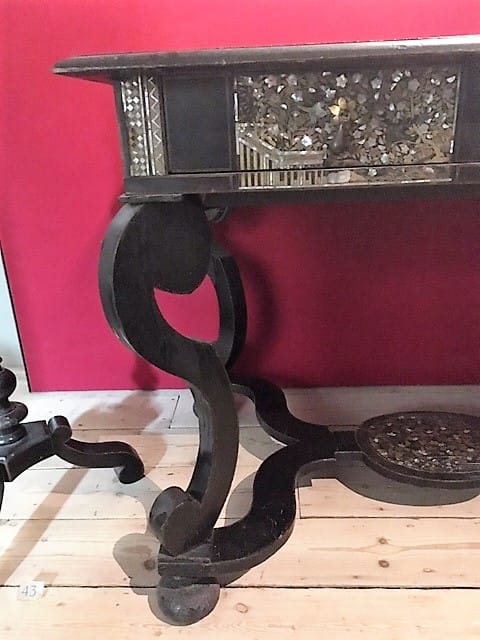
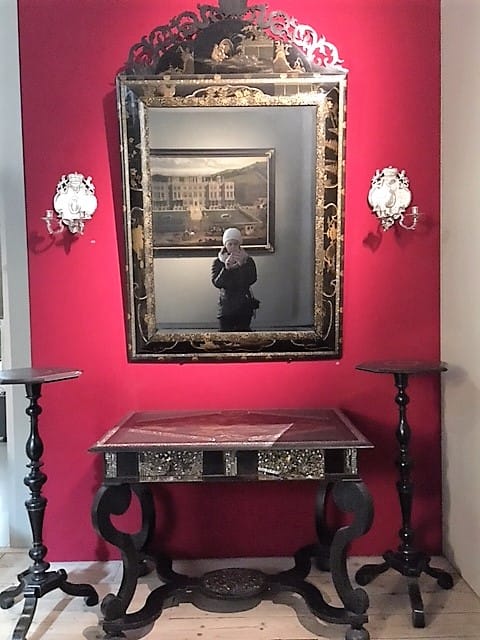
Here is a link to the museum. I only wish I had had more time!


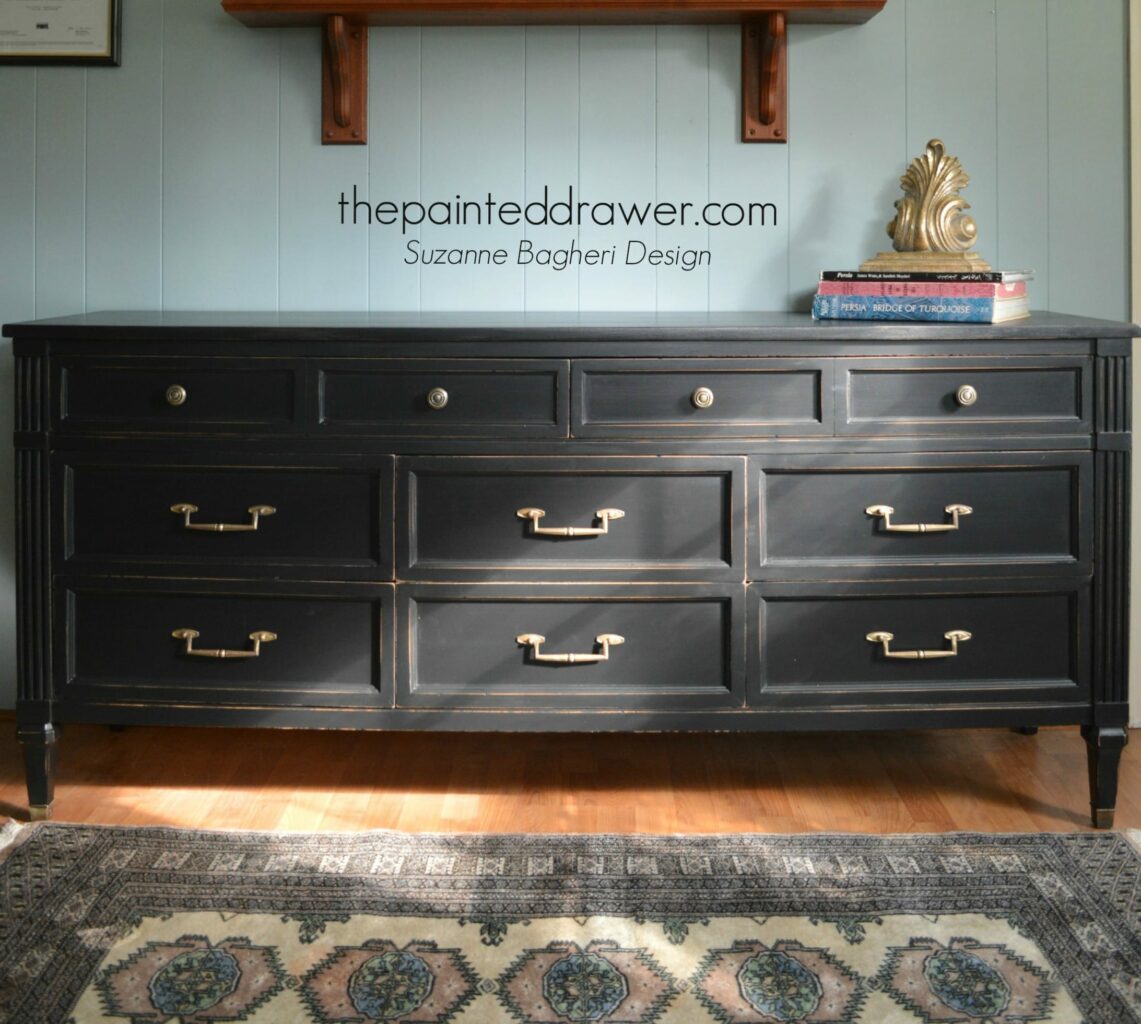
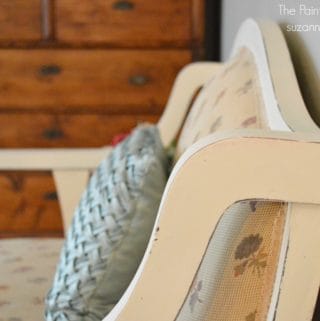
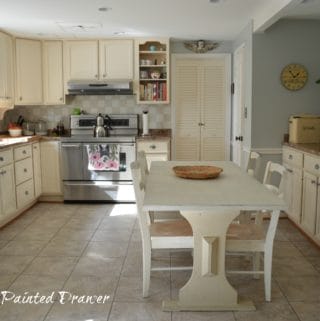
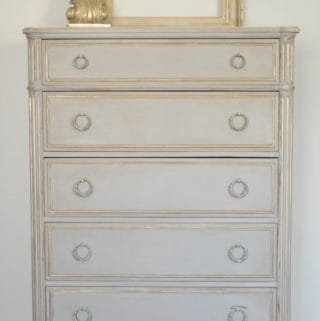
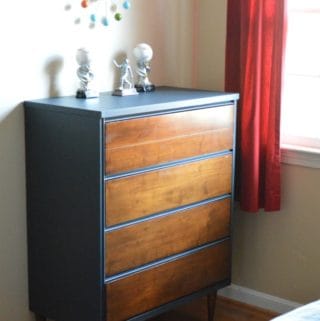
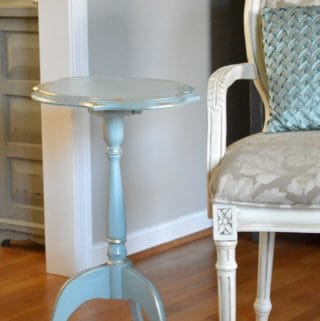
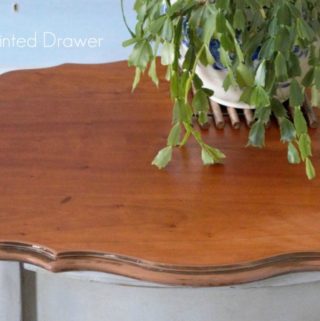
Oh my! Love the chair and tables especially. TFS
Aren’t they awesome?!
Incredible pieces Suzanne! Thanks for sharing
I’m so glad you enjoyed!
tHE INTRICACIES OF THE WORK ON THE FURNITURE IS TRULY AMAZING. tHE TIME IT TOOK TO CRAFT EVEN THE MOST SIMPLE PIECE MUST HAVE TAKEN FOREVER. BUT THEN WHAT ELSE DID THEY HAVE TO DO IN THOSE TIMES? dIDN’T HAVE TO TAKE THE KIDS TO SCHOOL, SOCCER, DANCE, PIANO, ETC LESSONS. dIDN’T HAVE THE COMPLICATED LIVES WE HAVE TODAY. iT CERTAINLY GAVE THEM TIME TO HONE THEIR ART THAT’S FOR SURE! tHAT FURNITURE IS HUNDREDS OF YEARS OLD AND STILL STANDING. i CAN JUST HEAR YOU STARTING TO NEGOTIATE~